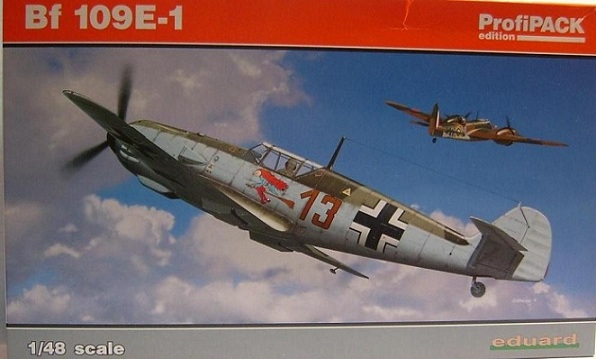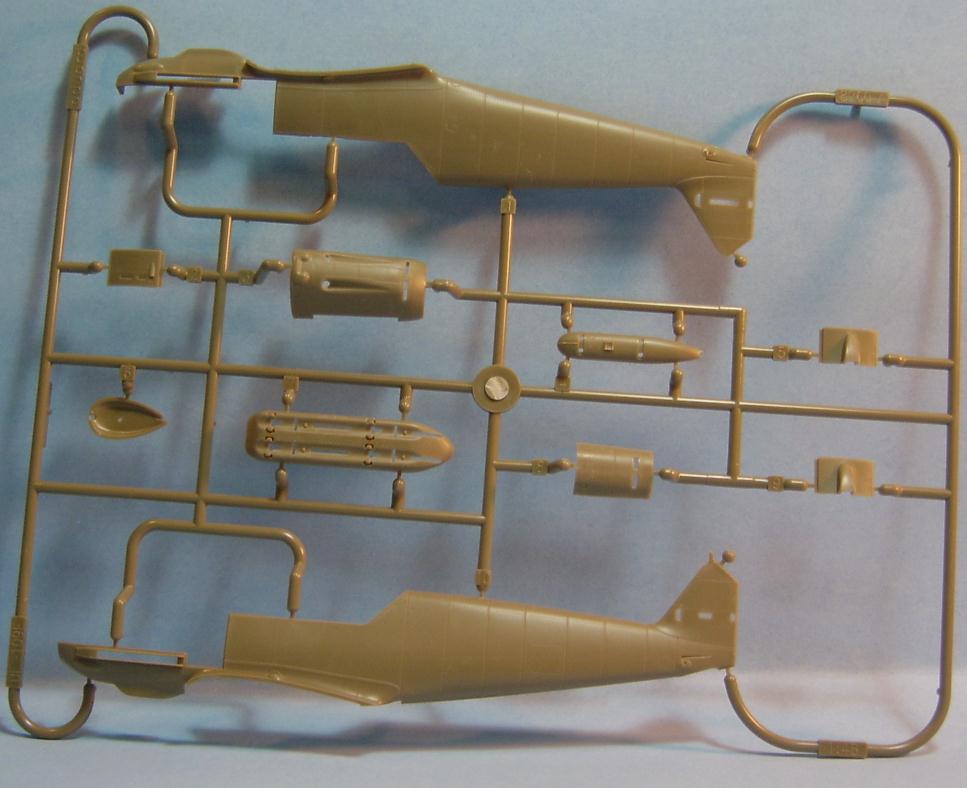
Eduard 1/48th Bf 109E-1
By Rick Geisler
Introduction:
The Messerschmitt Bf 109 series was numerically the most important German Luftwaffe fighter of the Second World War. It is no wonder that kits of this aircraft series abound and the 109E is no exception. Eduard’s release of the early version E is certainly a welcomed addition to the kits available in this scale, and is only the second offering of the Bf 109E-1 by any manufacturer in a full fledged non-conversion release. This kit incorporates all of the changes made to the 1/32nd kit to correct accuracy issues, and is certainly the equal of kits issued by other manufacturers.
The Kit

|
|
|
|
|
|
|
|
|
|
|
|
|

|
|
|
The kit includes 156 plastic parts, plus photo etched details , and canopy masks. PE parts include pre-painted instrument panels/dials, switch panel, seat belts, rudder pedals, radiator screening, and various small details.
A complete engine is also included, and unlike its 1/32nd counterpart, can be displayed with the engine cover in place or removed.
Surface detail is outstanding with finely recessed panel lines and rivet detail.
Also included are parts for what will certainly be a later released Jabo version of the E-4 including accurate bomb racks and bombs, and a long range fuel tank (not used on this version). The canopies are well molded , thin and very clear.
Decals are provided for four aircraft, Red 13 of Ofw. Kurt Ubben,6(J) Tragergruppe 186; Yellow 2 , 6/JG 52; Yellow 11, Fw. Artur Beese, 9/JG. 26; and Red 1, Hptm. Hans Trautloft, 2/JG77. Decals also include full stencil markings.
Construction:
Construction is straightforward and begins with the interior. Fuselage side details are assembled, then cockpit floor, seat, chin radiator, and instrument panels. The oxygen regulator/tank is too high and should be shortened or replaced.
Next up is the firewall, engine assembly. Again, one difference between this and the 1/32nd kit is that the engine is made to fit with the cover on. Detail in this area is nice for the scale but as always there is room for scratch building details or “Aftermarket” parts.
The next step involves installing the engine and cockpit sub- assemblies and gluing the fuselage halves together. Be sure to install the tail wheel assembly before closing the fuselage halves.
Tail surfaces are attached in the next step and then one moves on to the assembly of the wings. The wheel well is molded separately and looks very good, the assembly being simplified as compared to the 1/32nd version. Flap and aileron detail/ribbing still seem to be a little heavy to me, but don’t detract from the overall appearance of the kit.
After the wings are assembled one gets to the point of choice for removed or in place engine cowling. If displaying the engine, install parts D20, 18, and 41 x 2. These are the fully detailed machine gun assemblies.
If closing up the engine move on to the next step, attaching the wing assembly.
Next up is the landing gear / wheel assembly. The wheels are nicely done and are very detailed and accurate. Attach the detail parts to the wings and primary assembly is complete.
If you chose to do the closed up engine cowling, attach part D16, the MGs to the engine cover.
Final airframe assembly includes adding the fuselage side panels, engine cover assembly, and main instrument panel. Depending on your building/painting process then the canopies and prop assembly will conclude your build.
Accuracy:
As stated in the beginning, Eduard has included all of their corrections made to the 1/32nd kit in this model. There are still some minor issues with the location of the fuel filler access hatch on the right fuselage, a small fuselage length issue, and the aforementioned oxygen tank. The slats seem to be closer to being correct than on the 1/32nd kit and are probably not off enough to warrant any correction.
Conclusion:
This is a finely detailed kit. Overall accuracy is excellent, with great surface detail and a really nice interior. As always, it is up to the individual modeler to correct, or not, any of the minor issues with the kit. I feel very comfortable in highly recommending this kit.
Thanks to Eduard, Internet Modeler, and Matt Bittner for the review sample.
